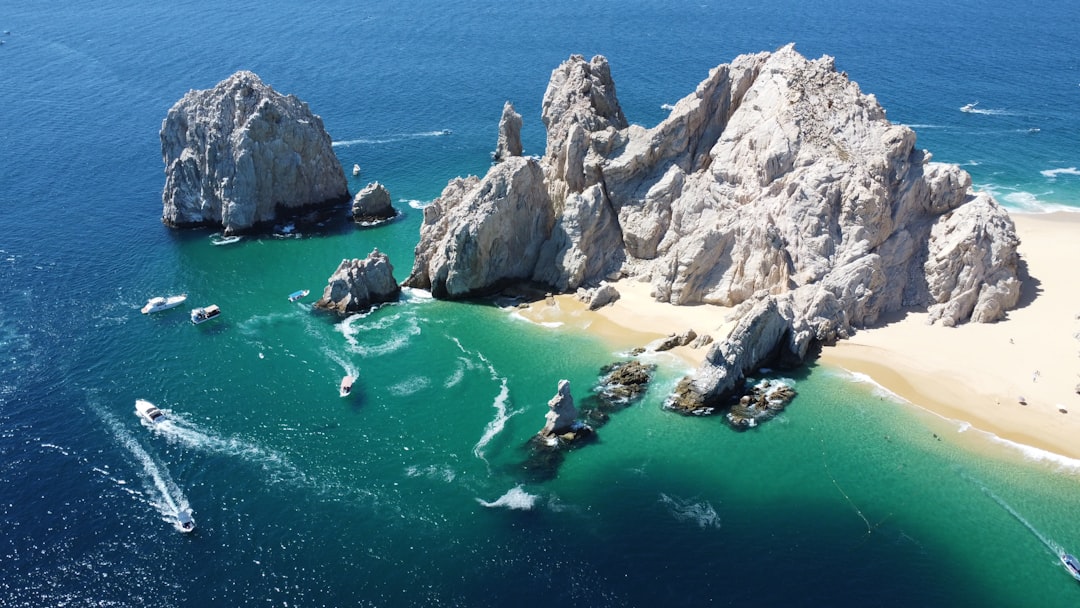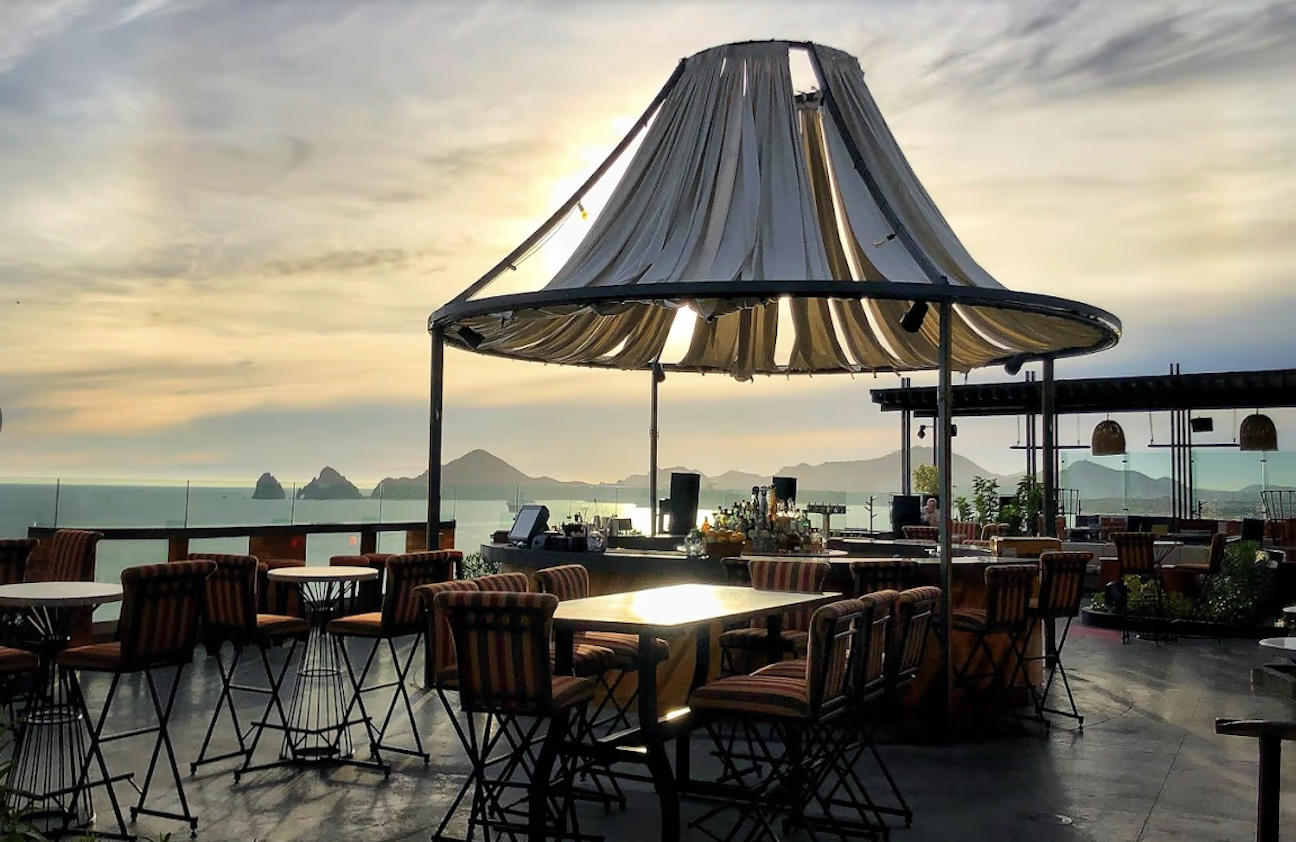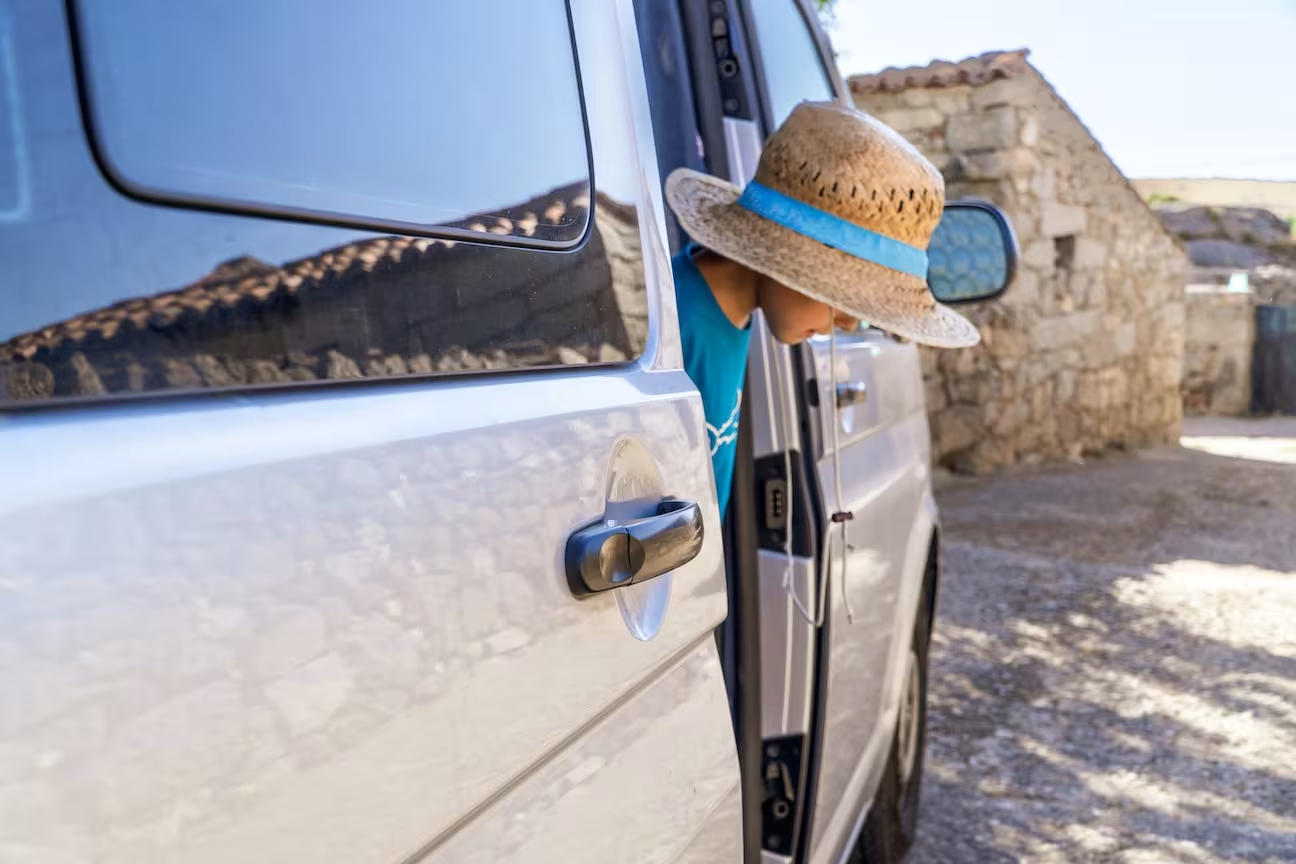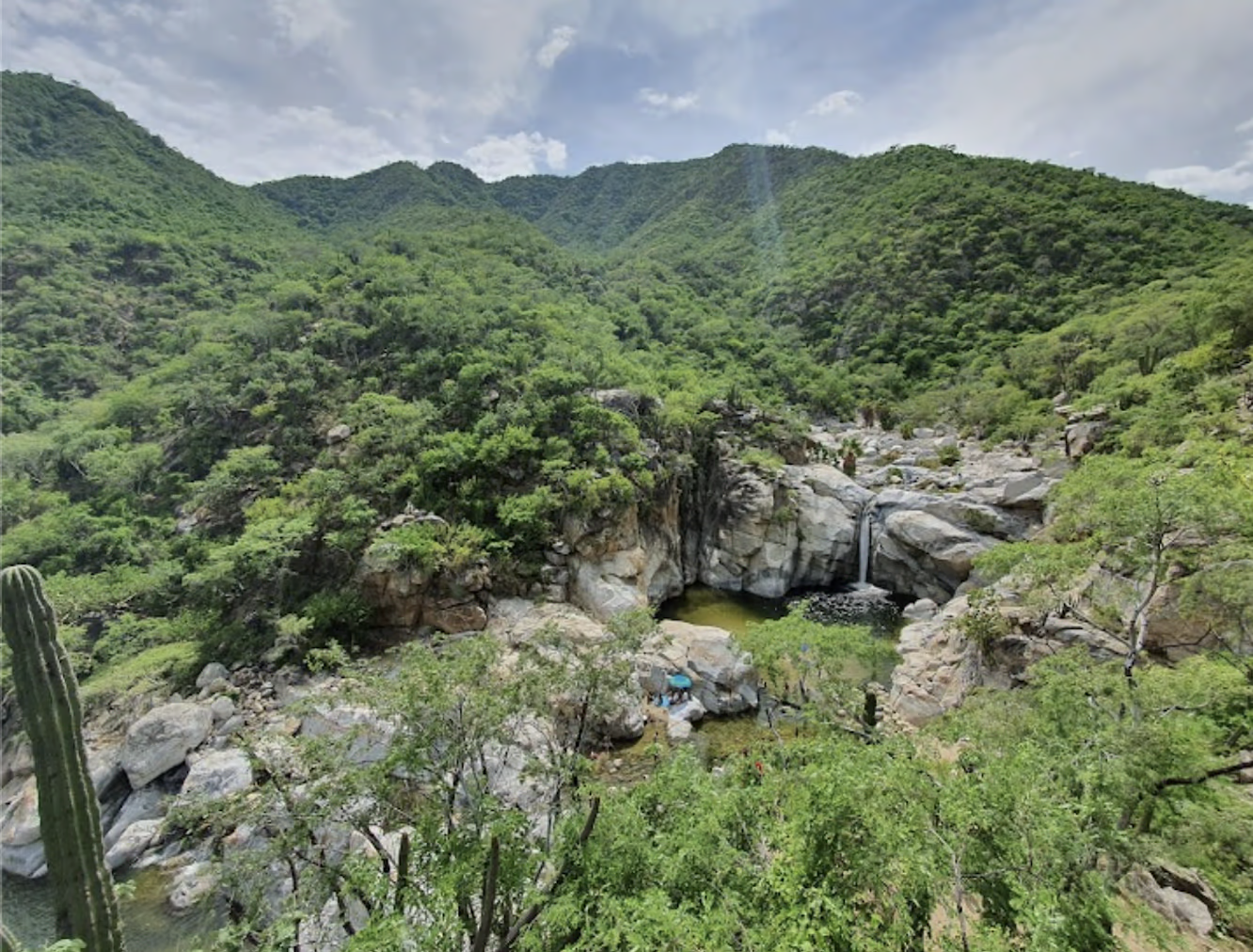Is Cabo Safe in 2025?
Yes, absolutely. Both Cabo San Lucas and the broader Los Cabos region remain among Mexico’s safest destinations for tourists, with crime rates that would make many other vacation spots envious.
I’ve been driving these roads for years, and the numbers back up what I see daily. Los Cabos welcomed over 2.13 million American and Canadian visitors in 2024, most enjoying trouble-free vacations across villa rentals and 5-star resorts. That’s not by accident.
| Safety Factor | Current Status |
|---|---|
| U.S. Travel Advisory | Level 2 (Exercise Increased Caution) |
| Crime Index | 44.50 (notably lower than Cancun’s 56.16) |
| Tourist Police | Dedicated force with visible presence |
| Violent Crime Against Tourists | Rare and uncommon |
| Beach Safety | Flag warning system in place |
| Hurricane Season | Mid-May through November |
What makes Los Cabos different? For starters, the Mexican government and tourism industry have prioritized safety. They’ve installed 300 new security cameras throughout tourist areas, expanded police patrols, and created a dedicated tourist police force that’s highly visible in key spots like the Marina district and Medano Beach.
We drive guests through these areas daily and regularly see these officers engaging with visitors, providing directions, and maintaining a reassuring presence.
Of course, no destination on earth is 100% risk-free. The smartest travelers to Cabo take common-sense precautions: staying in well-populated tourist zones, using reputable transportation (like our shuttle service!), keeping valuables secured, drinking bottled water, respecting beach flag warnings, and not flashing expensive jewelry or electronics.
The stunning beauty of the Baja Peninsula continues to be the real star here. Those gorgeous beaches, world-class resorts, and vibrant nightlife draw millions seeking a safe Mexican getaway. And that’s exactly what they find.
SJD Taxi has over twenty years of experience in the travel industry and has made countless trips up and down the Baja Peninsula. We’ve helped thousands of visitors steer their Is it safe to travel to Cabo Mexico concerns through my transportation company connecting SJD Airport to resorts throughout Los Cabos.
Why Listen to This Guide
Regarding Cabo safety advice, there’s a world of difference between someone who’s visited once and those of us who work here every day. Our team at SJD Taxi Airport Shuttle has been operating in Los Cabos for over 15 years, providing safe transportation to thousands of visitors annually.
We don’t just drive tourists around—we’re part of this community. We live here, work here, and know the real situation on the ground, not just what makes headlines.
This guide brings you the freshest 2025 data from official sources like the U.S. State Department and Canadian government advisories. But we’ve also blended in what we’ve learned from our daily experiences, conversations with hotel security staff, local tourism officials, and long-term expats who call Los Cabos home.
What’s changed recently? Quite a bit, actually. Los Cabos has significantly stepped up its safety game with:
- The installation of over 300 new security cameras throughout tourist zones (I’ve watched them being installed along my regular routes)
- An additional 150 police officers are specifically trained to assist tourists (many of whom speak excellent English)
- New panic button networks in high-traffic areas that connect directly to emergency services
- Expanded nighttime lighting in popular walking corridors (making evening strolls much more pleasant)
- Improved beach patrol and lifeguard services at popular swimming spots
- These aren’t just empty promises—I see these improvements in action every day as I transport visitors between the airport and their accommodations. The difference over the past few years has been remarkable, and it’s made my job of reassuring first-time visitors that much easier.
Is it Safe to Travel to Cabo, Mexico in 2025?
When travelers ask me, “Is it safe to travel to Cabo, Mexico?” I always point to the numbers first. They tell a compelling story about Los Cabos that might surprise you:
| Location | Crime Index (Numbeo) | Homicide Rate (per 100k) | U.S. Advisory Level |
|---|---|---|---|
| Cabo San Lucas | 44.50 | 138.26 | Level 2 |
| Cancun | 56.16 | 156.42 | Level 2 |
| Mexico City | 67.95 | 180.35 | Level 2 |
| Tijuana | 72.80 | 206.18 | Level 3 |
As you can see, Los Cabos consistently ranks among Mexico’s safest tourist destinations. The U.S. Department of State maintains a Level 2 travel advisory (“Exercise Increased Caution”) for Baja California Sur, where Los Cabos is located. Interestingly, this is the same advisory level they give to popular European destinations like France, Italy, and the United Kingdom.
The local crime statistics back this up. Looking at Cabo San Lucas from January to April 2024, authorities reported 8 cases of extortion, 35 drug deals, 31 vehicle thefts, 38 home break-ins, 79 assaults, and 143 cases of family violence. What’s crucial to understand is that the vast majority of these incidents affected local residents rather than tourists, and occurred outside the main tourist zones where you’ll likely be staying.
For extra peace of mind during your visit, I strongly recommend enrolling in the Smart Traveler Enrollment Program. It’s a free service that provides alerts and assistance from the U.S. Embassy should you need it.
Understanding the Travel Advisories
When researching “is it safe to travel to Cabo, Mexico,” you’ll come across various government travel advisories that can seem alarming at first glance. Let me break down what they actually mean for your vacation.
The U.S. Department of State uses a four-level system ranging from Level 1 (Exercise Normal Precautions) to Level 4 (Do Not Travel). Baja California Sur, including Los Cabos, currently sits at Level 2 (Exercise Increased Caution). This means travelers should be aware of heightened risks but can still visit with proper precautions.
What many travelers miss is the advisory’s specific note about Los Cabos: “There are no restrictions on travel for U.S. government employees in Baja California Sur, which includes tourist areas in Cabo San Lucas, San Jose del Cabo, and La Paz.” This is actually quite reassuring!
Canadian and Australian advisories take similar positions, suggesting “normal security precautions” or “increased caution” but not discouraging travel to the region.
I love what Jack Ezon, a travel industry expert, says about this: “I cannot believe how many people from New York, Chicago, or Los Angeles ask if Mexico is safe, as bullets fly on corners from those cities every day.” It’s all about perspective.
For real-time safety updates during your stay, I recommend:
- Registering with the Smart Traveler Enrollment Program
- Downloading the U.S. State Department’s travel app
- Following the U.S. Embassy in Mexico on social media
Crime You Might Encounter (and Rarely Do)
In our 15+ years helping travelers steer Los Cabos, I’ve found violent crime affecting tourists extremely rare. That said, it’s worth being aware of what you might encounter:
Petty Theft and Pickpocketing can happen in crowded areas like Medano Beach, the Marina, and public markets. I always advise our shuttle guests to secure valuables, use hotel safes, and carry only what they need for the day. Think of it as using the same common sense you’d use in any tourist destination.
Tourist scams exist but are easy to avoid once you know them. Watch out for taxi overcharging (always negotiate fares upfront), timeshare presentations disguised as “free tours,” and counterfeit money during currency exchanges. I’ve seen ATM skimming devices, too, so stick to bank ATMs inside businesses when possible.
The “broken camera” scam is another one to know – someone claims you broke their equipment and demands payment. Simply walk away and find a tourist police officer if they persist.
Express Kidnappings make headlines but are extremely rare for tourists in Los Cabos. These involve forcing victims to withdraw money from ATMs. Simple precautions like avoiding displays of wealth and using ATMs inside banks during daylight hours virtually eliminate this risk.
Tourist areas in Los Cabos benefit from dedicated tourist police forces, regular patrols in key areas like the Marina district, community crime prevention programs, security checkpoints at resort entrances, and surveillance cameras throughout tourist zones. Our transportation team at SJD Taxi Airport Shuttle works closely with these security networks to ensure our passengers travel safely throughout the region.
Safest Zones vs Spots to Skip After Dark
After hundreds of trips around the peninsula, I’ve developed a good sense of Los Cabos’ different neighborhoods. Here’s my insider perspective on where to go and where to be extra cautious:
Safest Areas:
Pedregal feels like a fortress of tranquility. The Pedregal luxury community offers top-tier security and is home to some of Cabo’s most exclusive resorts and vacation rentals. I’ve never heard of safety issues here.
The Hotel Zone/Tourist Corridor connecting Cabo San Lucas and San José del Cabo spans 20 miles of resort paradise with private security, controlled access, and regular police patrols. It’s home to Grand Velas, Solaz, The Hilton, Westin, and Cabo Del Sol, which now has a Four Seasons.
Marina District is the beating heart of Cabo San Lucas with a heavy police presence, well-lit walkways, and security cameras. It’s generally safe day and night, though I still recommend the standard precautions after dark. This is where you’ll find many restaurants and shops.
Medano Beach, the main swimming beach in Cabo San Lucas, has lifeguards, police patrols, and resort security. It’s perfect during daylight hours and early evening. I bring my own family here regularly.
San José del Cabo’s Art District transforms during the Thursday Art Walk into one of my favorite Los Cabos experiences. It’s well-patrolled, family-friendly, and offers a more authentic cultural experience than some parts of Cabo San Lucas.
Areas to Exercise Extra Caution:
Unlit Beaches After Dark should be avoided for safety and natural hazards. The ocean currents can be unpredictable, and there is limited visibility.
Remote Areas of East Cape are generally safe but have limited police presence and cell service. I advise our guests to avoid driving at night here – the roads can be challenging even during daylight.
Los Cangrejos and Las Palmas neighborhoods north of the CSL airport are primarily residential and not oriented toward tourism. There’s nothing particularly dangerous, but there’s also not much for visitors.
City Center Areas Away From Tourist Zones require increased caution, especially after dark. Stick to well-lit main streets if you’re exploring beyond the tourist areas.
Long-term residents I’ve spoken with insist that Cabo has “always been a safe place” for tourists, particularly when they stick to these well-established visitor areas. In my experience helping thousands of travelers steer Los Cabos, I wholeheartedly agree.
Street-Smart in Los Cabos: Crime, Health & Transport Tips
Safety in Los Cabos extends beyond crime prevention to include transportation safety, health considerations, and natural hazard awareness. Here’s how to stay street-smart during your visit:
General Safety Tips:
- Keep a low profile—avoid flashy jewelry and displays of wealth
- Split your cash and cards between different secure locations
- Use the bSafe app to share your real-time location with friends/family
- Download the GeoSure app for neighborhood-by-neighborhood safety ratings
- Carry a photocopy of your passport and store the original in your hotel safe
- Learn basic Spanish phrases for emergencies
- Save local emergency numbers: 911 works throughout Mexico
Digital Safety:
- Use only password-protected WiFi networks
- Consider a VPN for sensitive online activities
- Be cautious about sharing real-time location updates on social media
- Disable Bluetooth when not in use to prevent digital skimming
As Alexis Schärer, a hospitality expert, succinctly puts it: “Stay away from drugs and you’re likely to stay clear of trouble.”
Transportation Checklist: Airport to Resort
Transportation safety is crucial when considering whether it is safe to travel to Cabo Mexico, particularly for your first journey from SJD Airport to your accommodation. Here are your safest options:
Pre-Arranged Airport Transfers (Recommended)
At SJD Taxi Airport Shuttle, we prioritize safety with:
- Licensed, background-checked drivers
- Regularly maintained and insured vehicles
- GPS tracking on all vehicles
- Child car seats are available for private transfers
- Free cancellation up to 72 hours before service
- Clearly marked meeting points under numbered umbrellas outside both terminals
Private vs. Shared Shuttles
Both options are safe, but they offer different experiences:
Private Transfers:
- Direct transportation to your destination
- No waiting for other passengers
- Optional grocery stops are available
- Complimentary water or beer
- Child car seats are available upon request
- Door-to-door service, including inside gated communities
Shared Shuttles:
- Economical ($13-40 per person)
- Multiple stops (typically 2-4)
- 15-60 minute wait time for departure
- No grocery stops permitted
- Cannot enter private communities (drop-off at gate)
- Service typically ends between 4-6 PM
- Child car seats are not permitted
Ride-Share and Taxi Considerations
While ride-share apps technically operate in Los Cabos, they exist in a legal gray area and cannot pick up passengers from federal zones like the SJD airport. This has led to confrontations between app-based drivers and transportation authorities, sometimes stranding passengers.
Beach Safety:
- Understand the beach flag warning system:
- Green: Safe for swimming
- Yellow: Exercise caution
- Red: Dangerous conditions
- Black: Beach closed
- Blue: Marine life hazard
- Purple: Harmful microorganisms present
- Many Los Cabos beaches have strong currents and undertows
- Swim only at beaches with lifeguards present
- Medano Beach is one of the few consistently safe swimming beaches
- Apply sunscreen regularly—UV exposure is intense
- Stay hydrated and limit alcohol consumption in the sun
Book through reputable operators with proper safety equipment and insurance if you’re planning activities like boat tours, snorkeling, or water sports. Your hotel concierge or our team at SJD Taxi Airport Shuttle can recommend trusted providers.
Health & Natural Hazards
Beyond crime considerations, staying healthy and safe in Los Cabos means being prepared for natural conditions and potential hazards:
Water and Food Safety:
- Drink only bottled or purified water
- Use bottled water for brushing teeth
- Most hotels and restaurants use purified ice, but ask if unsure
- Eat at established restaurants with good hygiene practices
- Street food can be safe if properly cooked and served hot
- Wash your hands frequently or use hand sanitizer
Wildlife and Natural Hazards:
- Bark scorpions are present in the region—shake out shoes before wearing
- Los Cabos has 18 different varieties of rattlesnakes (mainly inland)
- Yellow-bellied sea snakes occasionally appear in coastal waters
- Use insect repellent to prevent mosquito-borne illnesses
- Jellyfish appear seasonally—watch for beach warnings
Weather and Natural Disasters:
- Hurricane season runs mid-May through November (peak August-October)
- The 2014 Hurricane Odile (Category 3) caused significant damage
- More recent hurricanes like Norma have affected the region
- Earthquakes are possible—know your hotel’s evacuation procedures
- Heat exhaustion is a real risk—stay hydrated and seek shade
For hurricane updates during your visit, monitor the National Hurricane Center website.
As Rich Biswell notes: “Hurricanes are so hit-and-miss, you shouldn’t not travel to Mexico and block out those months.” Indeed, off-season travel often means lower prices and fewer crowds, with only a small risk of weather disruption.
Medical Considerations:
- Hospitals in Los Cabos typically require upfront payment
- Most don’t accept U.S. domestic health insurance
- Travel insurance with medical coverage is strongly recommended
- Bring any prescription medications in original containers
- Pack a basic first-aid kit for minor issues
- For emergencies, dial 911
Your Safe Cabo Trip Starts Here
After analyzing the data, speaking with security experts, and drawing from our years of experience serving visitors to Los Cabos, we can confidently answer the question: Is it safe to travel to cabo mexico? Yes, with proper precautions, Los Cabos offers a safe and enjoyable vacation experience for most travelers.
Los Cabos stands out as one of Mexico’s safest regions, benefiting from:
- Geographic isolation on the Baja Peninsula
- Heavy investment in tourism security infrastructure
- Strong economic incentives to maintain safety
- A dedicated tourist police force
- Community involvement in security
The region is particularly well-suited for:
Family Travelers: Resort areas offer secure environments with family-friendly activities and controlled access. Many resorts feature kids’ clubs, protected swimming areas, and family-oriented excursions.
Solo Travelers: While standard precautions apply, solo travelers regularly enjoy Los Cabos safely. The developed tourist infrastructure and abundant group activities, which are great for destination weddings, make it easy to explore securely.
Female Travelers: Women traveling alone or in groups should exercise the same precautions they would in any tourist destination. The tourist zones are generally safe, though extra vigilance is recommended after dark.
At SJD Taxi Airport Shuttle, we’re committed to being part of your safe Cabo experience. Our services include:
- Reliable airport transfers with professional drivers
- Private transportation custom to your needs
- Welcome drinks to start your vacation right
- Optional grocery stops on private transfers
- Child car seats upon request
- 24/7 customer support
Your journey to Los Cabos begins and ends with transportation, and we take pride in making those critical transitions seamless and secure. By booking your airport transfers in advance, you eliminate one of the most common stress points in international travel.








